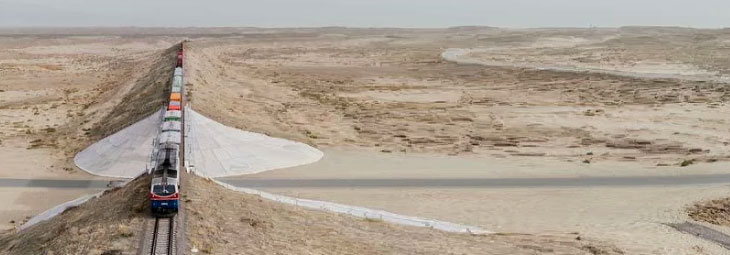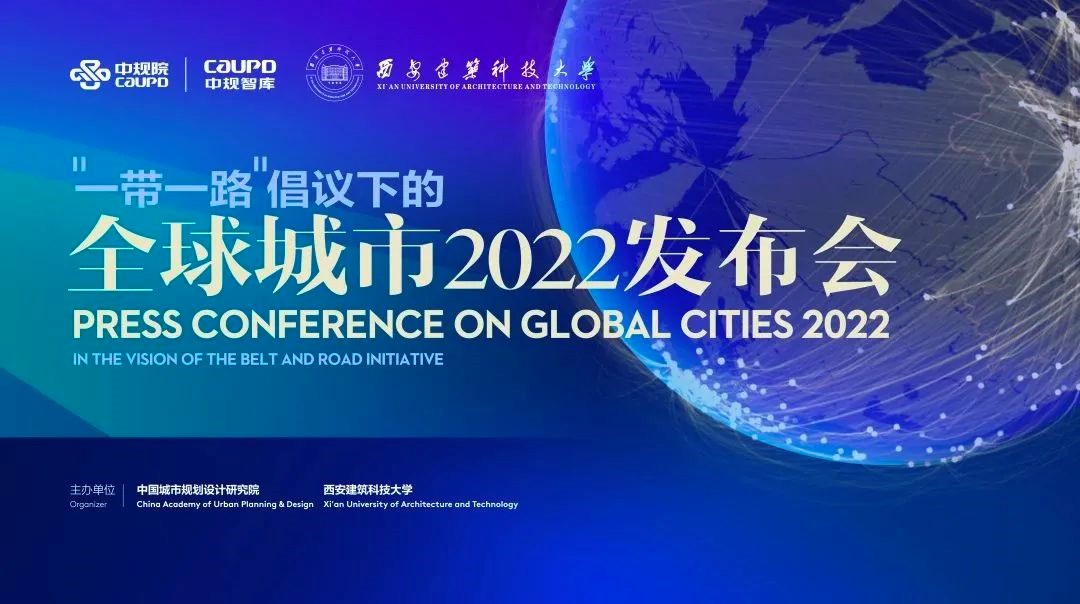



Source:https://mp.weixin.qq.com/s/E4koLkDwHQ3aBfGOXJ2piw
How can cities integrate into globalization and move toward internationalization through innovation? How to enhance urban resilience through infrastructure development? How to promote the ecological resilience in urban space… Experts and scholars at the press conference on Global Cities 2022 in the Vision of the Belt and Road Initiative held in Xi'an, Shaanxi Province, discussed issues related to urban development and contributed wisdom to the development of urban and rural planning. The conference was jointly hosted by the China Academy of Urban Planning and Design (CAUPD) and Xi'an University of Architecture and Technology (XAUAT).
Usher in new development opportunities
The report to the 20th National Congress of the Communist Party of China proposed: "We will improve urban planning, construction and governance, accelerate the transformation of the development mode of megacities, implement urban renewal actions, strengthen urban infrastructure construction, and build livable, resilient and smart cities." This points out the basic direction for the urban development in the new period.
Mr. Wang Shusheng, President of XAUAT, pointed out in his opening speech that currently the cities are facing many risks and challenges. How to promote the green and smart development of cities, promote the efficiency of urban governance, cultural inheritance and innovation, social and economic recovery, improve the quality of life and achieve high-quality urban development are the major issues facing all sectors of society. Global Cities in the Vision of the Belt and Road Initiative, as the brand research results of CAUPD, provides an important reference for high-quality and in-depth cooperation of "Belt and Road" and even global cities.
Mr. Wang Kai, President of CAUPD, released the Report of Global Cities in the Vision of the Belt and Road Initiative (hereinafter referred to as the "Report") with the theme of "Turbulence and Restructuring". Based on the global urban data research platform built by CAUPD, the research team have been continuously improving the index system and algorithm, observing the recovery characteristics and trends of global cities, and presented intuitively in a digital way and deeply discussed the characteristics and trends of global innovation, production and service, and connectivity infrastructure network.
Mr. Wang Kai believes that in the context of building a community with a shared future for mankind, cultural exchanges and mutual learning have become a strong bond of people-to-people bond in the Belt and Road Initiative, and domestic cities based on cultural resources have ushered in new opportunities for greater opening-up and transformation.
Focus on global innovation dynamism
Based on the Global Dynamic Cities Index combined with settlement recognition algorithm, the Report believes that 15 world-class urban settlements are the main force leading the global vitality, and innovation is the key to foster core competitiveness of cities in the new stage of multi-breakthroughs and bursting of groups in scientific and technological innovation.
Mr. Fang Yu, head of the Shenzhen branch of CAUPD, said that based on the analysis of innovation chains, the team specifically observed the performance of global cities in three innovation links: the frontiers of science, technology and industry. The frontier of science has produced original and disruptive core technologies or ideas through basic research. The rise of Beijing and other East Asian cities has accelerated efforts to strengthen the weak links in science. The technological frontier is mainly represented by technological innovation based on patent output, etc. East Asian cities show innovative vitality and advantages in PCT (Patent Cooperation Treaty) patent application and citation, and specialized technological innovation centers such as Shenzhen have emerged. The industrial frontier is dominated by global representative technological innovation enterprises and unicorn enterprises. Asian regions with high population concentration become the industrial innovation center, and cities such as Shanghai and Hangzhou have great potential.
Display historical and cultural values
The historical towns along the Silk Road are important carriers of the continuation of national "historical memory" and a symbiotic system of "historical information" under the multi-variable action of "man-nature-society-culture", constituting the diversity of the cultural ecological corridor along the Silk Road. As an international metropolis, Xi'an is an important platform for foreign exchanges in the new pattern of "the Belt and Road", a gateway for inland globalization, and a new sample of Chinese modernization that combines revival and innovation.
Ms. Ren Yunying, deputy dean of the School of Public Administration of XAUAT, took Xi'an as an example to introduce its important position in the regional economic and cultural pattern of "Silk Road Economic Belt" in her keynote speech. At present, the historical and cultural values and regional status of Xi'an have been gradually transformed and upgraded. From the perspective of empowerment, Xi'an's urban vitality, community exchanges and daily life have been constantly integrated into the realization of cultural values, which come from the spiritual place formed by daily life and social exchanges and the perception of the city.
At the same time, Ren Yunying believes that Xi'an has realized the value realization and transformation development of history and culture, and continued the exploration, innovation practice and the writing of urban history in aspects of historical protection, economic development, management and coordination with adaptation to different stages of social and economic development. In the future, the path of vitality regeneration of historical and cultural heritage resources will be Xi'an's key exploration direction in cultural industry and innovation.
Promote the inclusive urban development
In the Roundtable dialogue session, Mr. Lei Zhendong, dean of the School of Architecture, XAUAT, said that the current era is facing the demand for innovation. We need not only the confidence of national culture, but also the development of our own culture. Experts and scholars at the conference discussed how to achieve sustainable and inclusive development of cities, focusing on topics such as innovation, industry and connectivity.
As for the question of how Xi'an can rely on its own cultural heritage, highlight its cultural value and enhance its status in the global cities, Mr. Hou Quanhua, dean of the School of Architecture, Chang'an University, said that the key to Xi'an transforming culture into the strength and power of urban development lies in the creation of space carriers. Taking Tang Dynasty Sleepless City as an example, he introduced Xi'an's exploration in urban space composition, mode, scale and other aspects. He believed that the opening of ruins space could be used as spatial clues to plan and organize urban structure and style zoning.
In the face of the trend of more dispersed production networks and more concentrated service networks, Mr. Li Jianwei, the professor at the College of Urban and Environmental Sciences of Northwest University, proposed that "city clusters" should be taken as the starting point and resources should be reorganized to enhance urban competitiveness. As for Xi'an, it is difficult for a single city to integrate into global cities in terms of size and volume, so it should coordinate with Greater Xi'an Region and Guanzhong-Tianshui Cities Group to promote development.
Mr. Wu Zuobin, the President of Urban Planning and Design Institute, XAUAT, believes that urban resilience includes the resilience of social, economic, ecological, cultural and other factors. It is necessary to pay attention to the adaptation strategy of urban spatial structure and overall environment, so as to make urban space adapt to regional ecological background and avoid the destruction of landform caused by development from the perspective of overall layout and functional zoning.
Source:<http://www.chinajsb.cn/html/202302/16/32058.html>
Edited and Translated by Zhao Shengbo